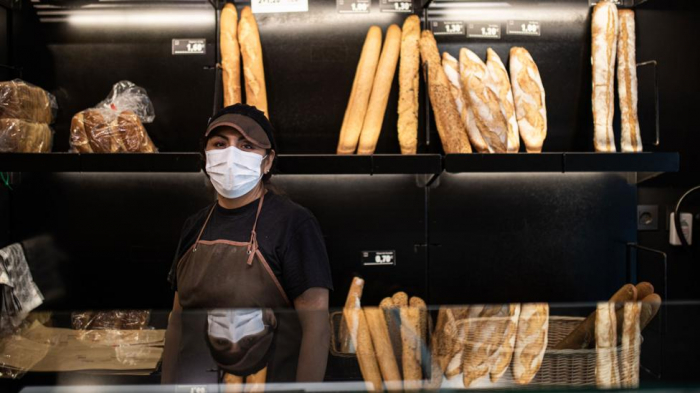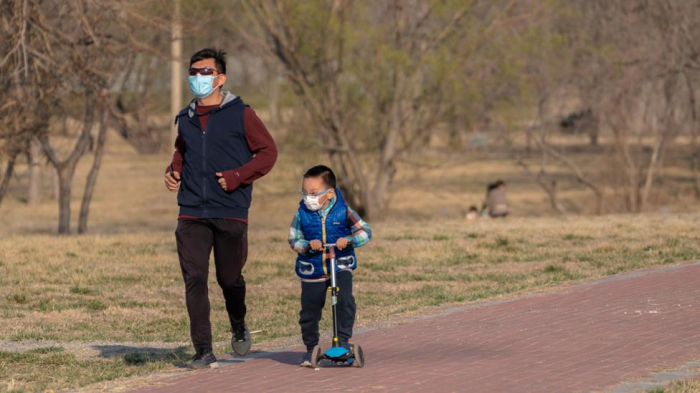Covid-19 has profoundly different outcomes for men and women – and not just in terms of their health. For a virus that infects people indiscriminately, why does gender have such an effect?
From bus drivers to prime ministers, people from all walks of life are falling seriously ill with Covid-19. This has drawn remarks that the disease doesn’t discriminate. The coronavirus is, after all, a more-or-less inanimate piece of floating genetic material. It is not capable of active discrimination.
And yet the virus is having starkly different effects on different groups of people.
One of the most pronounced divides to emerge regards gender. And how Covid-19 is affecting men and women differently isn’t just in the way that the virus is making us sick – it’s also in our long-term health and economic prospects.
Disease differences
One of the most striking differences that has emerged so far is in the death rates of men and women.
In the US, for example, twice as many men have been dying from the virus as women. Similarly, 69% of all coronavirus deaths across Western Europe have been male. Similar patterns have been seen in China and elsewhere.
One team of researchers, led by Anna Purdie at University College London, is charting the gender differences in various countries and working to find out more about why.
For now, the reason is still unclear.
One theory is that women’s immune response to the virus is stronger, says Philip Goulder, professor of immunology at the University of Oxford. “The immune response throughout life to vaccines and infections is typically more aggressive and more effective in females compared to males,” he says.
This is partly down to the fact that women have two X chromosomes, whereas men have only one – which is important when it comes a coronavirus. “In particular, the protein by which viruses such as coronavirus are sensed is encoded on the X chromosome,” says Goulder. “As a result, this protein is expressed at twice the dose on many immune cells in females compared to males, and the immune response to coronavirus is therefore amplified in females.”
Another possibility is that the difference is down to gender-based lifestyle choices. “There are important behavioural differences between the sexes, for example in smoking, which affect the level of pre-existing disease such as heart disease, chronic lung disease and cancer,” says Goulder. “These have a huge impact on the outcome from infections such as coronavirus.
“The sex differential in smoking is especially marked in some countries such as China, where 50% of men smoke, compared to 5% in women.”

In many countries, men are more likely to smoke than women - which impacts their lung health (Credit: Getty Images)
But at this stage of the pandemic, there’s not enough evidence to say whether this is a result of biological differences, behavioural ones – or if there is an element of both at play.
Financial fallout
There is, however, evidence emerging of another way that the virus is affecting men and women differently.
Michèle Tertilt, an economist at Mannheim University in Germany, has been working with colleagues to compile evidence of how the pandemic has been affecting male versus female workers in the US. The lockdown already has resulted in widespread job losses and many economies are soon likely to face recession. (Read more about the psychology of job loss in the Covid-19 crisis.)
But unemployment isn’t falling equally across the board, which is in part due to the unique circumstances of this particular economic downturn. “It’s quite unusual and different from a typical recession,” says Tertilt.
In the US, 1.4 million people become unemployed in March, the largest spike since 1975. Women have been harder hit than men, with a 0.9% increase in unemployment compared to a 0.7% increase for men.
One way that the current crisis is unusual is that, in a recession, men are often hit harder than women in terms of unemployment. This is because more men work in industries that are closely tied to economic cycles – such as construction and manufacturing. Women, conversely, dominate more in industries not tied to such cycles, such as healthcare and education.
But this time, other factors are having the largest impact on people’s jobs.
One is whether someone is a “key” or “critical” worker. Tertilt’s team classed workers in healthcare, transportation, protective services (such as the police), farming, fishing and forestry, and maintenance and repair as “critical workers”.
By this classification, 17% of employed women work in critical occupations, compared to 24% of all employed men.
The second big factor is whether people are able to do their jobs remotely by telecommuting. Tertilt and her colleagues sorted jobs into whether they are possible to do by telecommuting or not – a business analyst might well be able to work remotely, but a bartender definitely can’t.
Tertilt found that more men had jobs that were telecommutable than women – at 28% for men versus 22% for women.
“I was a little bit surprised at that,” she says. “I was expecting more women to be in telecommutable jobs – for example, women in government jobs, office jobs and so forth.
“But once you start thinking about it, it makes perfect sense – a lot of women work in restaurants, in the travel industry. And worldwide, restaurants and bars are closed, and there is very limited travel.”

The closure of jobs that can't be done by telecommuting has disproportionately affected women (Credit: Getty Images)
Research carried out by the UK’s Institute for Fiscal Studies paints a similar picture. It finds that UK women are about one-third more likely than men to work in a sector that has been heavily affected or entirely shut down due to the pandemic, such as the retail and hospitality industries.
“From an economic perspective, low-paid, young, working-class women are known to be hit the hardest,” says Natasha Mudhar, global chief executive and co-founder of The World We Want, an enterprise aimed at accelerating progress towards the UN’s Sustainable Development Goals.
The gender pay gap compounds this inequality – not only are women losing jobs at higher rates, but they were making less money to begin with.
“For every pound that a man can spend on necessities during this crisis, a woman can only spend 82p,” says Mudhar. In the US, the gender pay gap is similar, with women earning 85% of what men earn. In Australia it is 86%, while in India it is 75%. And this is worse for women of some races and ethnicities than others – in the US, for example, black women earn 21% less than white women.
Single parents have been hit even harder. Tertilt’s research estimates that there are 20 million single parents in the US, three-quarters of whom are women. “Think about it – they won’t be able to work,” says Tertilt. “Even if they’re a nurse or a doctor, even if they have a job within critical infrastructure – they might have kids at home and they can’t leave them alone.”
Even for single parents in theoretically telecommutable jobs, it may not be realistic to continue to work with small children who require constant attention. “Especially for single mums, there is no other margin,” says Tertilt. “They cannot hire a nanny or ask a neighbour or a grandmother. They are, by and large, losing their jobs.”
Another problem is that in countries that have a government-backed furlough scheme (including the UK, Germany and the US), these parents might not be eligible if they quit their job before they could be furloughed. What’s more, they may not be eligible for unemployment benefits if they give up their jobs.

Women worldwide face gender pay gaps, making them more financially vulnerable in a crisis (Credit: Getty Images)
“Even if workers quit voluntarily because of childcare, they should be eligible,” says Tertilt. “The requirement that people should be ‘seeking work’ should be removed temporarily, until schools and day care re-open. It makes no sense in the current situation.”
Exposing inequality
This makes Covid-19 the latest in a long line of epidemics that have brought economic inequalities to the fore, including those around gender.
“All epidemics have gendered effects,” says Clare Wenham, an associate professor of global health policy at the London School of Economics and Political Science. “The problem that is no one had talked about it, and policymakers weren’t aware.”
Wenham and her colleagues researched the impacts of the Zika and Ebola outbreaks on men and women, and are now looking at Covid-19.
One consequence of the Ebola epidemic in Sierra Leone was a dramatic increase in maternal mortality. The World Health Organization has emphasised that maternity health services remain essential during the pandemic, and that all women “have the right to high quality care before, during and after childbirth”. But that is not always put into practice.
“We know from previous outbreaks, everything [in terms of resources] goes to the outbreak,” says Wenham. “That means routine service provision is disrupted. And the first thing to go is maternal health services.”
Other women’s health services, such as access to contraception, are also precarious unless governments state that they are essential services. The family planning organisation Marie Stopes has estimated that 9.5 million women and girls worldwide could risk losing access to Marie Stopes contraception and abortion services in 2020 because of the pandemic.
Reports of domestic violence, too, have surged as a result of the pandemic. In France, cases rose by a third in the first week of lockdown, while reports are up 75% in Australia and cases have doubled in Lebanon. While domestic violence can affect men or women, women experience a disproportionate amount; in the US, they are twice as likely to experience violence from an intimate partner and 14 times as likely to be raped, for example.
“We know domestic violence normally happens in the home,” says Wenham. “Then you shut people you in the home in a stressful period when people don’t have money and can’t go to work. You don’t have to be a rocket scientist to see why that results in more domestic violence.”

Men are at greater immediate health risks from the virus, but the less severe impacts on women can play out for a number of years after an epidemic (Credit: Getty Images)
The picture is undeniably bleak at present – and for both genders in different ways.
For men, particularly those in older age groups, the immediate risk of death from the disease is the greatest concern. For women, who are more likely to recover from the virus, other repercussions of Covid-19 may last for years to come.
And it is not too late for governments to respond to those hit hardest economically, says Wenham. There is plenty that could be done now to ensure those hit hardest economically are able to recover: “We should be making sure there is economic stimulus for women during and post the outbreak to get them back into work,” she says. “Is there childcare provision when women are trying to do so?”
And, through the gloom, Tertilt’s research has unearthed two silver linings for gender equality.
The first is workplace flexibility. “Millions of businesses are adjusting to working-from-home schemes on the fly right now,” Tertilt says. In some parts of the US, March saw more than a 200% increase in teleconferencing compared with the previous month. “There is some scope that this will be shifting norms to some extent, and that will make it easier to combine careers and families,” she says. “Women are going to benefit more from these changes in business culture and workplace flexibility because historically they are the main providers of childcare.”
The second upshot affects a small but significant slice of the workforce. Tertilt’s study looked at heterosexual couples, 8-12% of whom may be thrown into reverse gender roles by lockdown, she says. “Think of a couple where she is a medical doctor on the front lines, and the husband has an office job that is possible to do by telecommuting,” she says. “In such a couple, it is very likely that he will suddenly be the main childcare provider. She is at the hospital and he is at home telecommuting and somehow watching the kids.” Given that in the US 60% of childcare is provided by women, Tertilt finds, this could lead to a sizeable shift.
These changes in care can lead to lasting effects down the road. Policies in countries such as Germany and Sweden have found that introducing paternity leave increases the level of involvement of fathers in their children’s care for years afterward.
“Based on that, I would infer that even here, if lockdown lasts only a month or two, I think there will be long-term effects,” says Tertilt. “If it lasts longer, the effects might be larger.”

Single parents are a particularly hard-hit group by lockdown measures (Credit: Getty Images)
A health crisis like coronavirus emphasises and exacerbates inequalities of all kinds, and gender is only one of them.
“All this intersects with other areas of inequality,” says Wenham.
In the US, for example, cities with large African American communities have borne the brunt of the epidemic. But this underscores an issue that existed before the new coronavirus. Structural inequalities around race are strongly linked to profound health disparities. Black residents of Chicago typically live nearly nine years less than their white neighbours, for example, according to Chicago public health commissioner Allison Arwady.
And as the evidence on Covid-19 has overwhelmingly shown so far, those who have underlying health conditions are more likely to die with the virus. And in the US, underlying conditions like diabetes and heart disease disproportionately affect African Americans.
“We know gender and race and religion and disability all intersect in other areas of health,” says Wenham. “There’s no reason to think it won’t be the same here.”
While the virus doesn’t discriminate, that doesn’t mean that all parts of society are equally at risk.
If anything, it is quite the opposite – this virus is throwing health inequalities across the board into sharper relief than ever.
BBC Future
More about: COVID-19















































